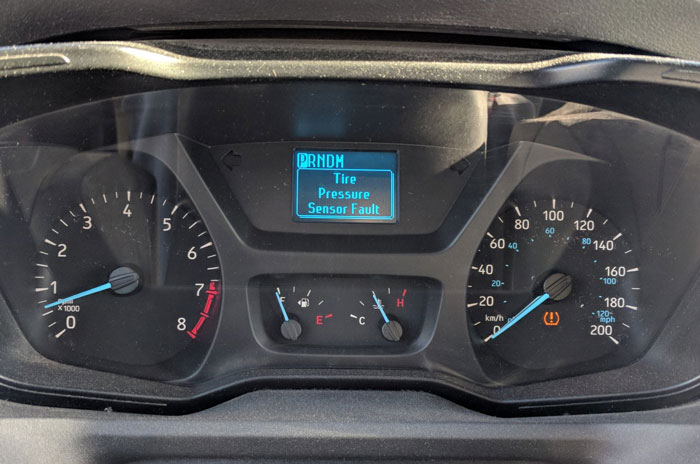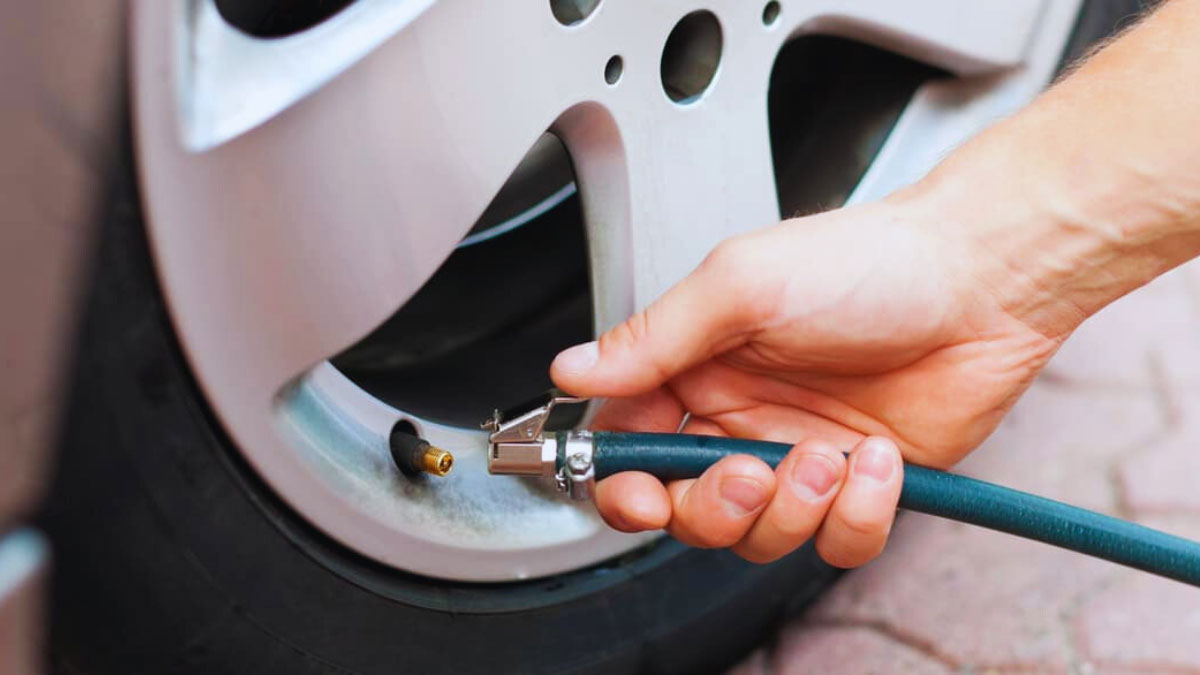If you’ve ever been faced with the frustration of a blinking tire pressure sensor light on your dashboard, you’re not alone. Knowing how to reset the tire pressure sensor can save you time and money by avoiding unnecessary trips to the mechanic. In this step-by-step guide, I’ll walk you through the simple process of resetting your tire pressure sensor quickly and efficiently.
Maintaining proper tire pressure is crucial for your safety on the road and the longevity of your tires. By understanding how to reset the tire pressure sensor yourself, you can ensure that your vehicle is running smoothly and efficiently. Follow along as I share the easy-to-follow steps to reset your tire pressure sensor and get back on the road with confidence.
Understanding Tire Pressure Sensor Resetting
When it comes to understanding how to reset the tire pressure sensor, it’s essential to know that these sensors are designed to monitor the air pressure inside your tires continuously. These sensors communicate with your vehicle’s onboard computer system, alerting you if the tire pressure is too low or too high.
To reset the tire pressure sensor, I need to locate the reset button typically found under the steering wheel. By pressing and holding this button for a few seconds, I can initiate the resetting process. It’s crucial to consult the vehicle’s manual for the exact location of the reset button as it can vary depending on the make and model of the car.
After locating the reset button, I must ensure that all four tires are properly inflated to the recommended pressure levels. Once the tires are inflated correctly, I can proceed with the reset process by following the step-by-step instructions provided in the vehicle’s manual. This action allows the sensor to recalibrate and adjust to the new tire pressure settings.
Understanding the tire pressure sensor resetting process is vital for maintaining the safety and performance of your vehicle. By following the correct steps to reset the sensor, I can ensure that my tires are functioning optimally, promoting better fuel efficiency and longer tire lifespan.
When Should You Reset Your Tire Pressure Sensor?
To maintain optimal vehicle performance and safety, resetting your tire pressure sensor is essential.

Reasons for Resetting TPMS
I reset my tire pressure sensor in the following situations:
- Tire Rotation: After rotating my tires, ensuring accurate pressure readings by resetting the sensor is crucial.
- Tire Replacement: When replacing a tire, resetting the sensor keeps the system up-to-date with the new tire’s pressure specifications.
- Seasonal Changes: With seasonal temperature fluctuations affecting tire pressure, resetting the sensor helps maintain accurate readings.
- Warning Light: Whenever the tire pressure warning light illuminates, it’s a sign to reset the sensor to ensure proper functionality.
Resetting the tire pressure sensor in these scenarios ensures accurate readings, optimal performance, and enhanced safety while driving.
Step-by-Step Guide: Resetting Your Tire Pressure Sensor
Resetting your tire pressure sensor is essential for optimal vehicle performance and safety. Let’s dive into the detailed steps to reset your sensor effectively.
1. Identify the Type of TPMS
When resetting your tire pressure sensor, it’s crucial to know the type of TPMS your vehicle uses. There are two main types: direct TPMS, which relies on pressure sensors inside each tire, and indirect TPMS, which uses wheel speed sensors to detect underinflated tires. Check your vehicle’s manual to determine the type of TPMS it has before proceeding.
2. Inflate Your Tires to the Correct Pressure
Before resetting the tire pressure sensor, ensure that your tires are inflated to the recommended pressure levels. You can find the correct tire pressure values in your vehicle’s manual or on a sticker located on the driver’s side door jamb. Use a reliable tire pressure gauge to check and adjust the pressure as needed.
3. Monitoring the TPMS Battery
The TPMS sensor battery might need replacement after several years. Monitor the battery status to ensure the sensor functions correctly. If you notice a persistent fault or inaccurate readings, it might indicate a depleted battery, necessitating a replacement to maintain accurate tire pressure monitoring.
4. Adjust Transponders if Necessary
In some cases, especially after tire rotation or replacement, recalibrating the transponders may be required to ensure accurate sensor readings. Consult your vehicle’s manual for instructions on adjusting transponders to align them with the new tire positions properly.
5. Reset Using Magnet Method
For vehicles equipped with a magnet-based reset option, follow the manufacturer’s instructions to reset the tire pressure sensor using this method. Typically, this involves placing a magnet near the sensor to trigger a reset. Make sure to perform this step accurately to reset the sensor successfully.
6. Utilizing Scan Tool Method
If your vehicle requires a scan tool for resetting the tire pressure sensor, acquire the necessary tool or visit a professional mechanic. The scan tool method involves connecting a diagnostic tool to the vehicle’s OBD-II port to reset the sensor. Follow the tool’s instructions carefully to complete the reset process accurately.
Troubleshooting Tips for Persistent TPMS Issues
To troubleshoot persistent TPMS issues, I recommend following these steps to address any ongoing problems effectively:
- Verify Sensor Placement:
- Check that all sensors are installed in the correct position on each tire. Incorrect sensor placement can lead to inaccurate readings and TPMS malfunctions.
- Inspect Sensor Batteries:
- Ensure that the batteries in the sensors are in good condition and have sufficient power. Weak or dead batteries can cause the TPMS to transmit incorrect data or fail to communicate with the vehicle’s system.
- Check for Interference:
- Look for sources of electromagnetic interference, such as nearby electronic devices or high-power electrical equipment, which can disrupt the sensor signals. Eliminating interference can help resolve TPMS issues.
- Reset TPMS System:
- If troubleshooting the above steps does not resolve the problem, perform a full reset of the TPMS system according to the vehicle manufacturer’s instructions. This process can recalibrate the sensors and resolve persistent issues.
- Seek Professional Assistance:
- If persistent TPMS issues persist despite troubleshooting, it is advisable to seek assistance from a qualified automotive technician or dealership. They have the expertise and tools to diagnose and address complex TPMS problems effectively.
By following these troubleshooting tips, you can identify and resolve persistent TPMS issues, ensuring accurate tire pressure monitoring and optimal system performance.
Importance of Regular TPMS Maintenance
Maintaining your TPMS regularly is crucial for optimal vehicle performance and safety. As a responsible driver, I understand that regular TPMS maintenance plays a key role in ensuring accurate tire pressure monitoring and overall system efficiency. By following proper maintenance practices, I can enhance my driving experience and extend the lifespan of my tires.
I prioritize regular TPMS maintenance to avoid potential safety risks associated with driving on underinflated tires. Ignoring TPMS alerts can lead to decreased fuel efficiency, uneven tire wear, and compromised handling. By staying proactive and resetting my tire pressure sensors as needed, I can address issues promptly and prevent more significant problems down the road.
When it comes to maintaining my TPMS, following the manufacturer’s guidelines is essential. I refer to my vehicle manual for specific instructions on resetting the sensors and interpreting warning signals. By adhering to these guidelines, I can ensure that my TPMS functions accurately and provides reliable tire pressure information.
Regular TPMS maintenance also involves troubleshooting any persistent issues that may arise. I take the time to verify sensor placement, inspect sensor batteries, and check for any potential interference that could affect sensor functionality. If I encounter ongoing problems, I consider performing a full TPMS system reset or seeking professional assistance to address complex issues effectively.
Regular TPMS maintenance is a critical aspect of maintaining vehicle safety and performance. By understanding the importance of proper tire pressure monitoring and following best practices for sensor resetting, I can drive confidently knowing that my TPMS is functioning optimally. Prioritizing TPMS maintenance is a proactive approach that enhances overall driving experience and promotes safe and efficient vehicle operation.
Conclusion
Ensuring your tire pressure sensor is properly reset is key to maintaining safety and efficiency on the road. By following a simple step-by-step guide and staying proactive with TPMS maintenance, you can enhance your driving experience and prolong your tire lifespan. Remember, accurate tire pressure monitoring is not just about convenience; it’s about keeping yourself and others safe. Stay on top of your TPMS system, adhere to manufacturer recommendations, and don’t hesitate to seek professional help when needed. With these practices in place, you can drive confidently knowing your vehicle is operating at its best.
Frequently Asked Questions
Why is it important to reset tire pressure sensor lights?
Resetting tire pressure sensor lights is crucial for maintaining accurate tire pressure monitoring and ensuring optimal vehicle performance and safety. It helps prevent potential safety risks associated with underinflated tires, improves fuel efficiency, and extends tire lifespan.
When should I reset my tire pressure sensors?
It is recommended to reset tire pressure sensors after maintenance, when the warning light illuminates, or when adjusting tire pressure. Following the vehicle’s manual guidelines for resetting the TPMS is essential for accurate monitoring and safe driving experience.
How can I reset my tire pressure sensors?
To reset tire pressure sensors, inflate all tires to the recommended pressure, start the vehicle, and wait for about 20 minutes for the system to refresh. Locate the TPMS reset button, usually found under the steering wheel, and refer to the owner’s manual for specific instructions if needed.

